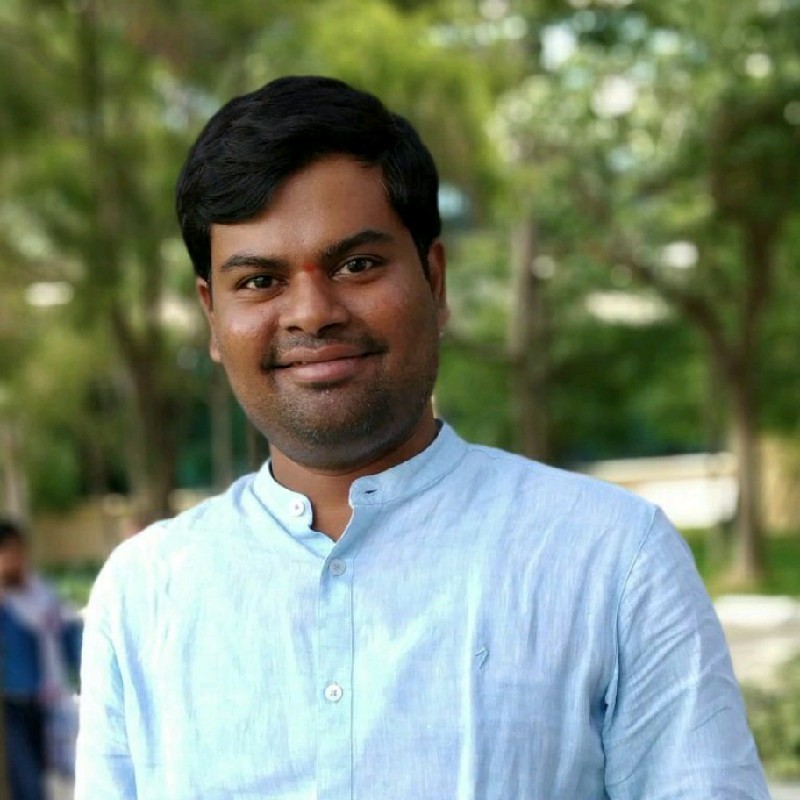Machine Learning: The Need of the Hour for Banks
Banks have been frontrunners in adopting new technological innovations for the past couple of decades and have taken advantage of everything technology has to offer.
Indian-born British inventor John Adrian Shepherd-Barron was inspired by chocolate vending machines and hit upon the idea “if vending machines could dispense chocolates, why couldn’t they dispense cash?” and pitched the idea to the head of Barclays Bank. They fell in love with the concept, and the first ATM was installed outside the Barclays bank in North London in June 1967.
With the invention of the ATM, customers were no longer constrained by bank hours and locations and could easily access their money.
Similar technological milestones were achieved when banks introduced electronic and card-based payments in the ’70s, the adoption of online banking in the ’90s and early 2000’s and widespread usage of mobile banking, which gained popularity in the early 2010s.
Very few would disagree that we are now in the digital age, supported by decreasing data storage and maintenance costs, increasing connectivity and access for all, and rapid advances in niche technologies such as Artificial Intelligence (AI)/Machine Learning (ML).
ML is a branch of AI that uses algorithms to learn from data with the least amount of human intervention. ML can lead to higher automation of processes and, when deployed after controlling the risks, can improve bank’s transaction processing and decision-making in terms of speed, accuracy, and compliance.
The global AI and ML in BFSI market size was valued at $7.66 billion in 2020 and is projected to reach $61.24 billion by 2030, growing at a CAGR of 23.1% from 2021 to 2030, as per the Allied Market Research report.
This projection emphasizes the tremendous potential in the AI/ML space where both financial institutions and customers can have a more complete and beneficial experience.
Boston Consulting Group estimated that banks implementing ambitious AI & ML strategies could add 15-20% to their bottom line in one to two years. Further, McKinsey expects that ML technologies in banking could potentially deliver up to $1 trillion of additional value for the global banking industry each year.
The pandemic was an unprecedented catalyst for the digitalization of banks across the globe. ML is constantly evolving, and FinTech will continue to be one of the leading industries to benefit from the power of AI/ML.
A couple of areas where banks can immensely benefit from the usage of ML are listed below:
Customer Onboarding:
Customer onboarding requires Compliance with different regulations and involves lengthy negotiations, stringent documentation, and complex products and services.
Traditional onboarding, especially for corporate customers, takes 2-3 weeks as the customer is required to produce various documents and go through time-consuming processes.
A report clearly states that 35% of the bank’s customers move to their competitors due to poor experience in onboarding.
As per a study, the key benchmark is that onboarding time should be less than 3 minutes for a 20-30% reduction in the onboarding dropout rate.
An onboarding experience can genuinely determine the customer’s current relationship with the organization. Customers expect the same convenience from a bank that they experience from other companies like Google, Amazon, and Facebook.
This results in pressure on banks to replicate the same experience while there is no compromise on compliance checks and KYC.
Muinmos’ award-winning, AI/ML-powered client onboarding platform claims to onboard any retail, professional, or institutional client globally within 3 minutes.
“Banks can complete retail customer onboarding on our platform in less than three minutes without the need for manual documentation or branch visits for KYC,” says Bankbuddy.AI
Customer Retention:
Customer retention metrics are factors, or variables, used to measure the likelihood of retaining a customer. This vital metric helps identify and convince customers before they decide to switch to other products or services. Its costs are much higher to add a new customer than to retain an existing one.
Any multi-billion-dollar bank usually deals with thousands of requests every minute, whether it’s a query related to loan sanction status, credit enhancement, documentation, or to inquire about the status of an existing request.
Most of the requests are similar or repetitive, and a few require real-time customer support officer input. Banks can use ML to automate and fasten their backend and support processes.
ML-Powered Chatbots provide real-time, intelligent, human-like personalized assistance and enhanced experience, thus saving a lot of human & organizational effort for the organization.
Chatbots learn from each request and conversations become more personalized in due course. These play a crucial role in customer retention as well as customer satisfaction.
One notable example of chatbot success is Bank of America’s ERICA, an ML-powered assistant within their mobile app.
As per the BOA Q4 2021 annual report, ERICA has 24.6 million active users. At the beginning of the pandemic, Erica added 1 million users a month from March through May 2020, bringing its user count to 14 million by the end of May 2020.
ERICA also completed more than 400 million requests from clients in the year 2021, registering a staggering 418% growth YoY in client interactions.
Regulatory Compliance:
Regulatory Compliance with federal and global regulations helps protect banks from various risks. The process of compliance is expensive due to the rapidly changing regulatory landscape.
As per the recent Citigroup report, global financial institutions are spending around 270 billion dollars every year on risk and regulatory compliance-related activities, close to 10% of their total operational spending. As per the estimates, close to half of the compliance expenses are spent on Technology.
To address these challenges, banks are using ML to make regulatory compliance easy to manage, scalable, and less expensive for their business. ML can help to drastically reduce, if not eliminate, the false positives in compliance systems.
In most banks, these alerts are reviewed by the compliance officer. ML algorithms can learn from the compliance officer’s data.
They can increase the efficiency and accuracy by consuming only a fraction of the time and thus reduce the costs by raising alarms only when the detection system isn’t sure, and human expertise is needed. Compliance.ai, Comply advantage, Jumio are a few notable compliance solution providers.
Fraud Detection:
Fraud is “the crime of cheating someone to get money or goods illegally”, as per the Oxford definition. As per a study, the loss due to financial fraud was $32 billion in 2020 and is estimated to exceed $ 40 billion by 2027.
Frauds can happen in various pervasive types like Phishing, Identity theft, Money Laundering, Mobile Fraud, Ghost Invoices, Stolen Cards etc.
The most popular way to mitigate the losses in financial institutions is by using an ML fraud detection algorithm, and as per a study, close to 60% of the banks are leveraging the benefit of ML in dealing with payments fraud.
ML systems learn from previous experiences and get better with time. They drastically require less human intervention, independently detect fraud, and take appropriate measures to stop it.
The Forrester Wave ™ Enterprise Fraud Management, Q3 2021 report evaluated the top eight enterprise fraud vendors across 35 criteria and rated the Product ‘Integrated fraud Management’ from NICE Actimize and ‘SAS Enterprise Fraud Solution’ from SAS as the leaders in this category
Credit Decisions:
Usually, it takes a day to a week to obtain credit approval in the traditional banking process. AI/ML-first banks designed and streamlined their lending process using extensive automation and real-time analysis of customer data to generate prompt credit decisions for retail and corporate customers.
“Credit applications and underwriting are the key areas where machine learning, and data analytics in general, will have an initial impact. The outcomes will include cost reductions, increased efficiency, and less demanding customer experiences,” experts suggest.
Peer to Peer Lending has gained a lot of interest both on the part of lenders and borrowers. Along with P2P lenders, Traditional banks also embrace ML solutions to improve the market share without additional risk.
ML processes for credit decisioning FICO scores and income data and data from social profiles, telecom usage data, location data, utilities, rent payments, and even health checkup records and then generate an accurate risk score.
Suppose the risk score is well within the threshold set by the lender the loan gets approved automatically. All this evaluation happens in a couple of minutes.
ACTICO is a leading international software provider for intelligent automation and digital decisioning.
Conclusion:
We have entered the era of AI and ML, and the use cases of ML in Banking is constantly rising. ML is transforming the Banking and Financial Services industry to streamline and optimize processes ranging from credit decisions to quantitative trading and financial risk management. In addition, it helps to improve customer experience, services, and reduce the frauds by monitoring transactions to detect suspicious transactions with compliance concerns.
Technologies like ML & AI are no longer the future – they are the present – it’s high time to catch up with the trend, and they are the need of the hour.
Cigniti, with its experience of being the core banking Digital Transformation and testing partner for pioneering mobile-only banks in US & UK, has vindicated its capabilities in areas such as omni-channel banking, retail banking, corporate banking, centralized banking, mortgages, cards and payment gateways. Cigniti has in-depth experience in testing across diverse industry standard products such as T24, Finacle, Flexcube, Bancs24, & Vision Plus, and compliance with regulations such as BASEL, BCBS 239, SEPA, AML, FATCA, etc.
Schedule a discussion with our Banking and Digital Transformation experts to find out more about why ML is the need of the hour for the Banking industry.





Leave a Reply